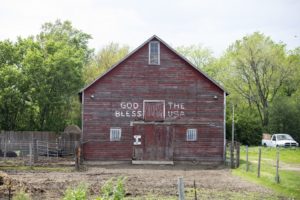
Bob Merrill remembers that in the 1980s, grown men cried in his kitchen before handing over their farm to the bank because they couldn’t pay the interest on their loans. (Kristina Barker/For The Washington Post)
Shane Merrill lives in a small town in South Dakota that’s 1,400 miles from Wall Street, but he watches the numbers as avidly as the traders.
Merrill isn’t an investment manager. He’s a family farmer. Right now, as he drives a tractor and planter to get soybeans in the ground, he’s also checking financial news on his smartphone. He’s worried, he says, about interest rates shooting up.
To keep his farm going, he has to borrow about $1 million a year from the bank, a common scenario for family farmers. Merrill takes out a loan in the early spring to buy seeds, fertilizer and fuel and aims to pay it back, with interest, after the fall harvest.
His local bank currently charges him 5.75 percent interest on the loan, a bit higher than the national average on a home mortgage. But his rate is almost certainly going to rise, an extra expense as farmers are getting the lowest prices in years for their crops.
The Federal Reserve has signaled that it will probably raise its benchmark interest rate at least five more times by the end of 2019. As the Fed boosts rates, banks charge more for credit card debt, car loans and home mortgages. Farmers like Merrill could soon face rates of more than 7 percent.
Read the rest of this here: https://bjsquirrel.com/wp-content/uploads/2018/06/Latest-Blow-to-Farmers-Rising-Interest-Rates.pdf
